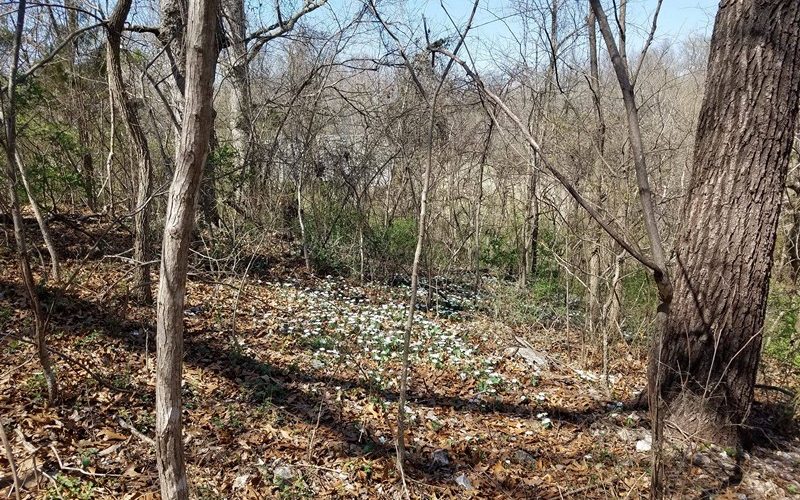Gardener works to oust invasive species
AMANDA BANCROFT
Making Ripples
Karen Takemoto is a champion of honeysuckle removal, working steadily to liberate her woods near Farmington.
“For over 15 years, we’ve been pulling out honeysuckle and other invasives in hopes of restoring the balance in our woods,” Karen wrote in a recent Facebook post. “With the opening of the canopy, light now streams in, and we have been rewarded with the return of native wildflowers and the strengthening of native trees. There’s still much work to do, but the difference is visible and encouraging.”
Bush honeysuckle is a common name that can also refer to the genus of three species of native North American deciduous shrubs, including the southern, northern and mountain bush honeysuckles. The invasive non-native Amur honeysuckle was imported from Asia as ornamental erosion control in 1898 through the New York Botanical Garden. Since then, it has rapidly and aggressively spread, causing a number of problems: It is linked to an increase in the number of pathogen-infected ticks, threatens the survival of nestlings, hinders the reproduction of American toads, out-competes native vegetation and creates impenetrable thickets which reduce biodiversity and make land management more challenging.
A study by Washington University in St. Louis discovered that tick-born diseases were more prevalent in suburban areas that had been invaded by Amur honeysuckle. “Experimental removal of the plant was shown to reduce deer activity and number of infected ticks,” the study showed. Areas of native vegetation had fewer pathogen-infected ticks. Birds are attracted to nesting in Amur honeysuckle, which makes their nests easily visible from the ground, increasing predation. Research published in the international ecological journal Oecologia found that chemicals produced by Amur honeysuckle caused higher than usual rates of death in American toad tadpoles, possibly by interfering with their respiratory systems. Because these bushes leaf out earlier than native groundcover plants and wildflowers, sunlight is blocked, and our native ecosystems become honeysuckle monocultures. For workers, monitors, hikers and land owners (to name a few affected groups) bush honeysuckle makes it difficult to walk around, and creates countless hours of labor, usually done by volunteers.

Photo courtesy Karen Takemoto
A hillside of bloodroot flowers blooms in March after removal of invasive bush honeysuckle.
For Karen, removing the bush from the roots and immediately planting a native in the hole has made the process less laborious. It’s easier than having to dig new holes and plant natives later. She has a special tool she uses which lifts the bush right out of the ground using leverage to uproot it, although they may have stopped making that particular model. Visit MisterHoneysuckle.com to learn more information and order your very own USA-made Honeysuckle Popper for about $150. Some people also go the DIY route and build a tool. There are also calls for help from all over Northwest Arkansas as organizations try to limit the spread and remove existing bushes, so jump in where you can or just start with your own yard! Dedication over time pays off, and Karen is living proof of that.
Amanda Bancroft is a writer, artist, and naturalist building an off-grid cottage for land conservation on Kessler Mountain. She and her husband Ryan blog about their adventures and offer a solar-hosted online educational center on how to make a difference with everyday choices at: www.RipplesBlog.org.










